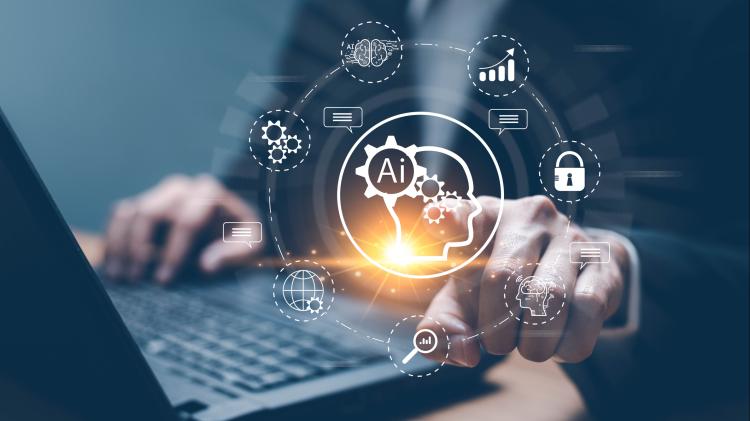
Imagination and experimentation, the bedrock of human creativity, have been pivotal in driving technological advancements. Yet, this innate ingenuity often grapples with obstacles like cognitive biases, gaps in knowledge, and resource constraints. Reflecting on the technological evolution from the 1980s and 1990s, dominated by desktop computers, research databases, books, and libraries, we’ve witnessed a seismic shift with the advent of the Web, internet, search engines, and websites. Today, Artificial Intelligence (AI) stands at the forefront, revolutionizing our approach to harnessing creative capabilities.
AI emerges as a key catalyst in fostering human imagination and experimentation, equipping us with innovative tools, expansive datasets, and deep insights. This infusion of AI-driven resources enables us to transcend traditional creative limitations, pushing the boundaries of what’s possible.
In the sphere of technological innovation, AI’s role is increasingly critical. It not only refines the creative process but also unveils unique perspectives and solutions, previously unattainable through conventional means. AI enhances research capabilities and nurtures novel problem-solving methodologies, reshaping the technological creativity landscape.
Integrating AI into the creative process marks a significant advancement, propelling us into an era where human and machine intelligence collaboratively spearhead technological innovations. This synergy between human creativity and AI sets the stage for unparalleled technological breakthroughs.
Revolutionizing Creativity and Experimentation with AI
AI is redefining the limits of human imagination and experimentation, ushering in a new age of innovation and exploration. By generating an array of novel ideas, visuals, sounds, and texts, AI acts as a dynamic stimulus for creative thinking. OpenAI’s DALL-E 2 exemplifies this, transforming written prompts into extraordinary visual art, thereby igniting curiosity and challenging conventional thinking.
The secret to AI’s innovative output lies in its deep neural networks, trained on vast datasets and free from traditional constraints. Techniques like disentanglement enable these networks to manipulate object attributes – shape, color, pose – creating unseen variations that expand our creative scope.
Furthermore, AI significantly bolsters our capacity for experimentation. It streamlines the process of testing and evaluating ideas, efficiently analyzing large datasets to identify trends, hypothesize, and predict. AI’s predictive prowess was showcased in Rolls-Royce’s development of a new superalloy, optimizing its properties through neural network analysis.
Advanced machine learning algorithms, evolving through continuous data input and feedback, further enhance experimentation efficiency. Techniques like reinforcement learning allow AI systems to learn from trial and error, optimizing actions based on rewards or penalties, and revealing solutions beyond human intuition.
Challenges and Risks in AI-Assisted Creativity
However, AI-assisted creativity isn’t without its challenges and risks. AI could potentially diminish human creativity by lessening our control or ownership over creative processes. AI-generated content may also reflect biases, inaccuracies, or ethical concerns. Thus, it’s crucial to employ AI responsibly and transparently, upholding human values, rights, and dignity.
AI might overshadow human roles in creativity, posing a threat to artists and creators who might feel outshined by AI’s capabilities. It’s vital to balance AI’s contributions with human skill development and critical thinking. Moreover, addressing the biases and errors in AI-generated outputs is essential to prevent the amplification of stereotypes or misinformation.
While AI-assisted imagination and experimentation propel technological innovation, creating new products, services, and solutions, we must be mindful of its limitations and ethical implications. A collaborative partnership with AI, rather than viewing it as a competitor, is key to unlocking innovation in technology.
Sources: AirGuide Business airguide.info, bing.com, forbes.com, sciencedaily.com, theatlantic.com, weforum.org
Brownlee, J. (2019, June 3). Generative Adversarial Networks for Beginners. Machine Learning Mastery. https://machinelearningmastery.com/
Kostakis, V., & Giotitsas, C. (2014). The (a)political economy of bitcoin. TripleC: Communication, Capitalism & Critique, 12(2), 431-440.
Crawford, K., & Paglen, T. (2019). Excavating AI: The politics of images in machine learning training sets. https://www.excavating.ai/
Zellers, R., Holtzman, A., Rashkin, H., Bisk, Y., Farhadi, A., Roesner, F., & Choi, Y. (2019). Defending against neural fake news. In Advances in Neural Information Processing Systems (pp. 9054-9065)
Enabling the ‘imagination’ of artificial intelligence — ScienceDaily https://www.sciencedaily.com/
The present and future of AI – Harvard John A. Paulson School of Engineering and Applied Sciences https://seas.harvard.edu/







